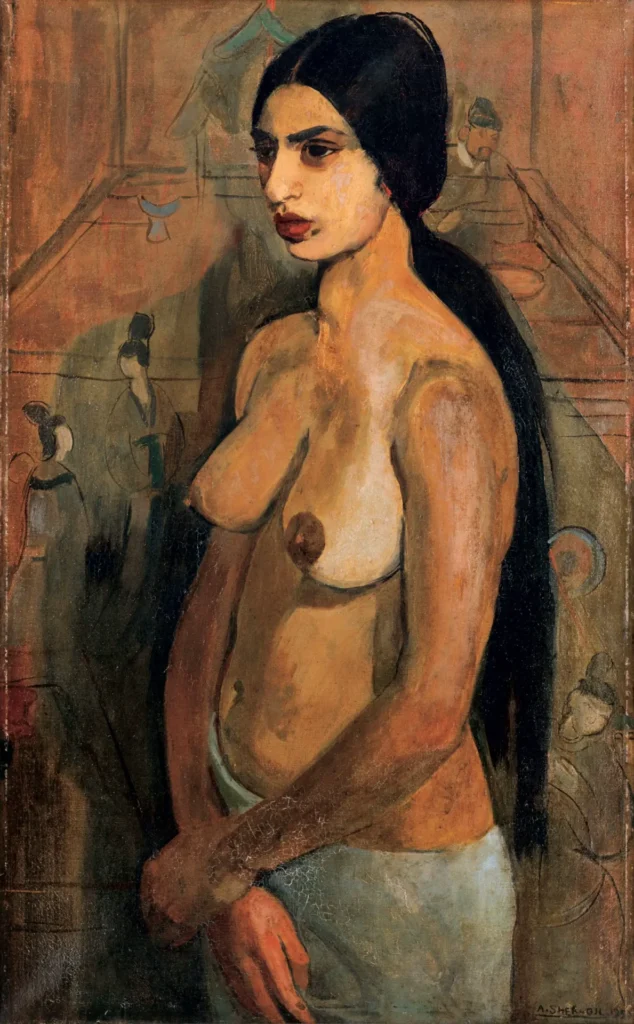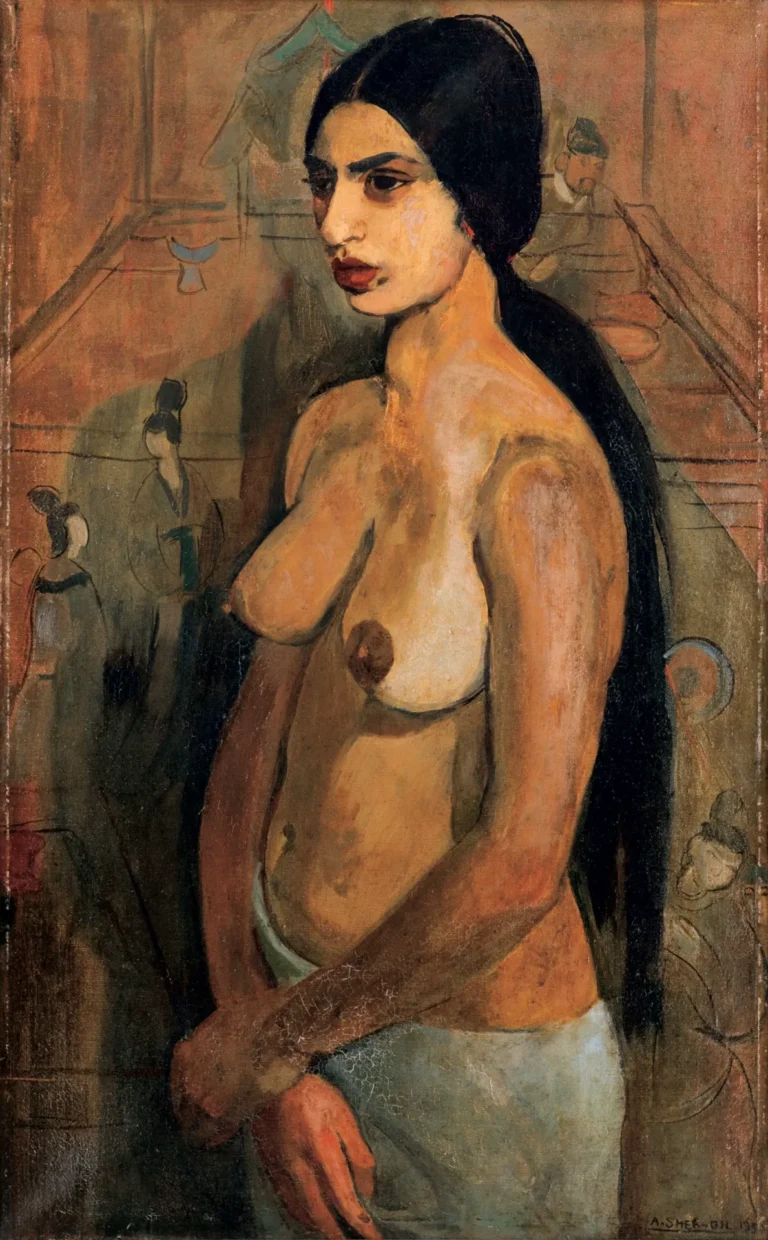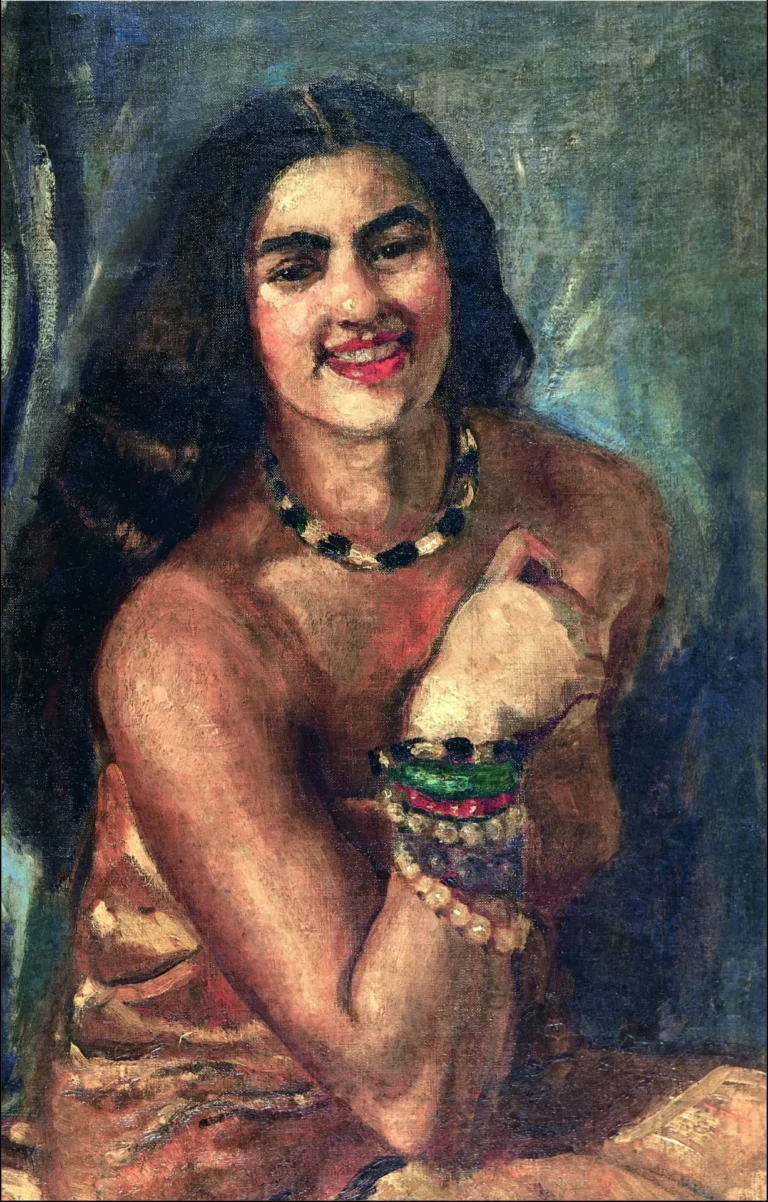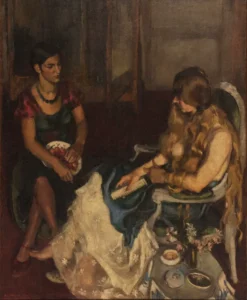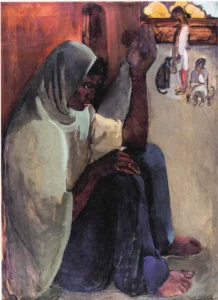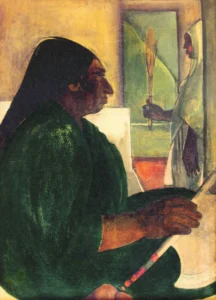Standing Nude
In 'Self-Portrait as a Tahitian,' Amrita Sher-Gil offers an introspective and powerful self-image, embodied in the delicate interplay of light and shade. Created in 1934, this oil painting captures her in a state of vulnerability, wrapped in a simple white cloth which accentuates her individuality. Sher-Gil's confident stance and thoughtful expression invite the viewer to engage with her exploration of identity and womanhood. This self-portrait also dialogues with the works of Paul Gauguin, as it critiques the male-centric depictions of women in art, establishing Sher-Gil's unique voice in the narrative of modernist art.
Year 1934
About the Artwork
Did You Know
Liked what you see? Add it to your collection.
Enjoyed reading? Share it.
... continued
Composition and Appearance
In this oil on canvas painting, Amrita Sher-Gil depicts herself in partial nudity, wrapped in a plain white cloth around her lower body. Her abdomen, breasts, and crossed arms are exposed. Her long, straight black hair is casually tied back, and her body is painted in varying shades of brown. She stands with a measured and firm posture, her hands crossed in front of her, and her face turned slightly away from the viewer, giving her a pensive and introspective expression.
Symbolism and Interpretation
The painting is significant for its layered meanings. Sher-Gil's self-portrait as a Tahitian nude can be seen as a nod to Paul Gauguin's works, but it also breaks away from the traditional tropes of representing colonized women. Instead, it conveys a sense of intellectual depth, individualism, and self-discovery. The work challenges the male, Western gaze and presents a sophisticated and self-possessed female figure.
Exhibition and Significance
'Self-Portrait as a Tahitian' was exhibited at the Salon des Tuileries in Paris in 1934, alongside another of her works. The painting is now held at the Kiran Nadar Museum of Art in Delhi and is considered a national art treasure under India's Antiquities and Art Treasures Act (1972).
Artistic Phase
This painting was created during Sher-Gil's time in Paris, before she returned to India and began her second phase of artistic development, which was heavily influenced by Indian art and culture. The work reflects her engagement with modernist techniques and her exploration of different cultural and artistic identities.




